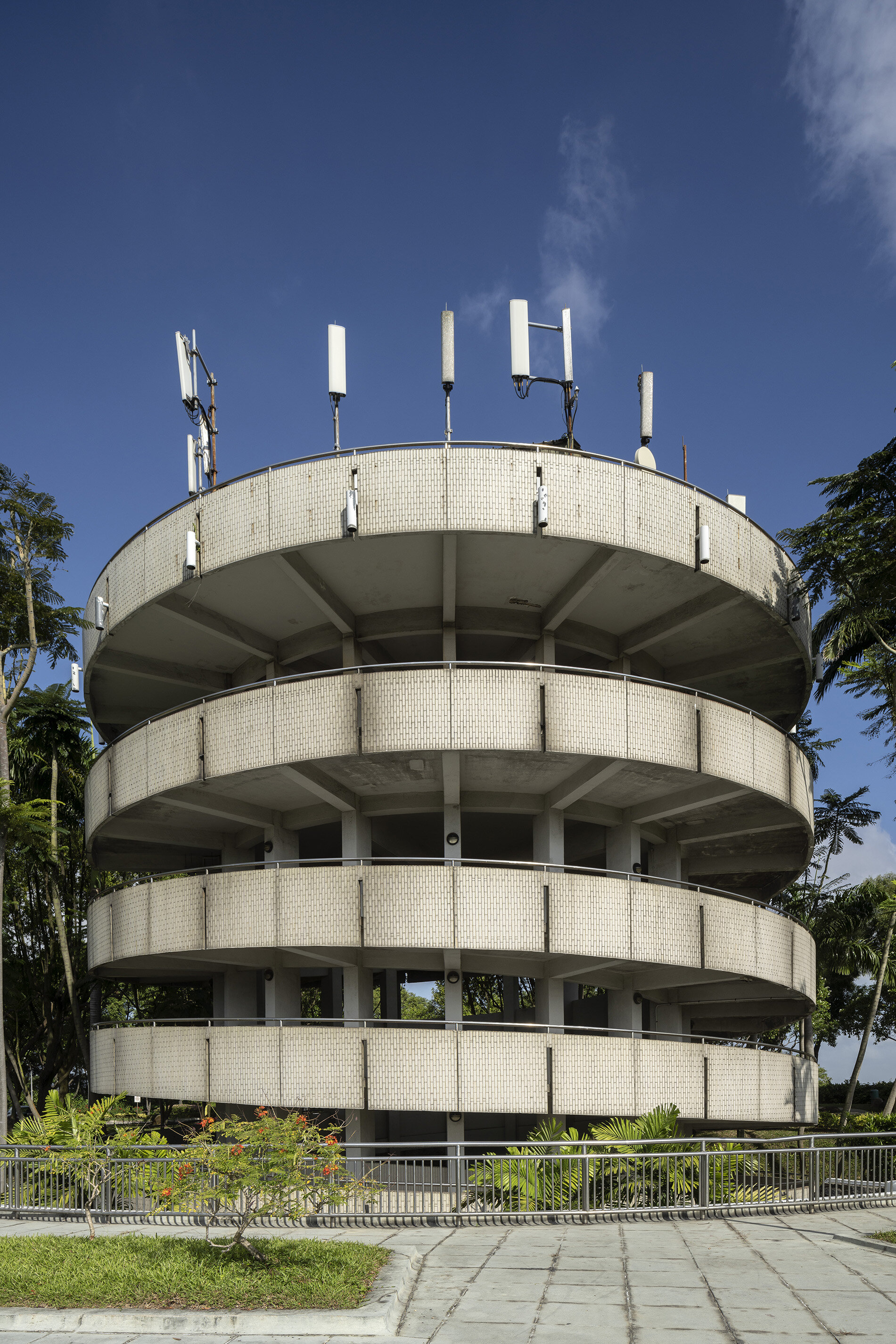Jurong Hill Lookout Tower
Located on the summit of Jurong Hill is this 18-metre-high tower offering views of the Jurong estate. It was built in 1969 by the Jurong Town Corporation as part of a plan to turn the 61-metre hilltop, formerly known as Bukit Peropok, into a garden for showcasing the then emerging Jurong Industrial Estate to foreign dignitaries as well as for the town’s workers and residents to enjoy.
The three-storey spiral tower, which costs over S$100,000, was dubbed as “futuristic” and a “modern imaginative design” because it had no stairs. Instead, visitors leisurely stroll up a ramp which offers views of the town from different heights. At the top of the tower was an air-conditioned VIP room featuring models and exhibits of the government’s industrialisation efforts in Jurong. There was also a restaurant at the foot of the tower, which was officially opened by the Minister for Social Affairs Inche Othman Wok on 22 June 1970. Known as the Hill-Top Restaurant, the fully air-conditioned outlet with a capacity of 200 offered both European and Chinese cuisine. It was touted as the first restaurant in Jurong Town.
The tower and its garden helped Jurong Hill live up to its nickname as “VIP Hill”. Over the years, it hosted the likes of world leaders such as Canadian prime minister Pierre Trudeau, Chinese vice-premier Deng Xiaoping, American vice-president Spiro Agnew and Britain’s Queen Elizabeth II. It was also visited by industrialists such as the Indian business tycoon Mr J.R.D. Tata.
Locations: 60 Jurong Hill, Singapore 628926
Architects: Jurong Town Corporation
Year: 1969
Status: Not conserved
Sources:
“Soon–a super tower on VIP hill.” The Straits Times, 5 January 1969, 4.
“Tower restaurant: Work begins.” The Straits Times, 15 April 1969, 4.
“Wok to open Hill-Top Restaurant.” The Straits Times, 22 June 1970, 16.
Last modified on 24 August 2021. Description by Justin Zhuang.


